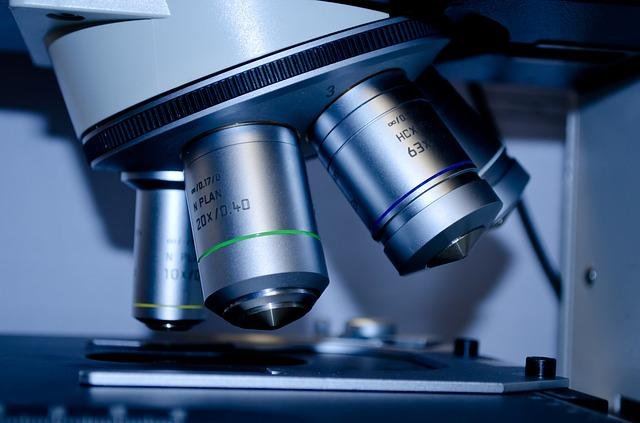
For decades, the tiniest thing humans could see was comparable in width to human hair.
When the microscope was developed in 1590, we discovered a new world of living things in our drinking water, food, and even under our noses.
In this article, we explore the fascinating story behind how the microscope was invented.
Who invented the microscope?
It is said that the microscope was invented by a Dutch spectacle maker named Hans Lippershey. However, there are also reports that claim that Galileo Galilei invented the microscope in 1609.
Whichever person is credited with the invention, it is clear that the microscope has been around for centuries.
How does a microscope work?
A microscope magnifies objects by projecting an image of them onto a screen or into a lens. This image is then magnified, which allows us to see the object in greater detail.
Microscopes can be used to view both living and non-living things, and they come in a variety of different shapes and sizes.
How did the microscope come to be?
The story goes that Lippershey was looking through a convex lens and noticed that by moving the lens away or closer to his eye, he could make objects appear larger or smaller.
He then attached two lenses together, creating a simple refracting telescope. Lippershey is said to have applied for a patent for his invention in 1608, but it was denied.
Galileo Galilei is often credited with being the first person to use a compound microscope. In 1609, he heard about Lippershey’s invention and decided to build his own version of the microscope.
He used a convex and concave lens to create a compound microscope, which gave him a much greater magnification than Lippershey’s telescope.
The microscope has come a long way since its invention in the 1600s.
Today, there are microscopes that can magnify objects up to 500,000 times their original size! This incredible technology has allowed us to see the world in a whole new way and has helped us to better understand the tiniest creatures that live on our planet.
Modern Technology Improving Microscopy
In the world of microscopy, new technologies are always being developed to help researchers see structures and objects that are too small or faint to be seen with traditional light microscopes.
One such technology is called scanning electron microscopy (SEM).
SEM works by bombarding a specimen with a beam of electrons. This causes the specimen to emit electrons, which are then captured by a detector.
The resulting image is a three-dimensional representation of the surface of the specimen.
Another new technology that is currently being developed is called optical coherence tomography (OCT).
OCT works by using light waves to create images of biological tissue. It is particularly useful for imaging thin tissues, such as the retina, and can be used to detect early signs of disease.
Timeline of the Microscope
- 1590: The microscope is invented
- 1609: Galileo Galilei invents the compound microscope
- 17th century: The microscope is improved and becomes more popular
- 19th century: Microscopes are used to study cells and bacteria
- 20th century: The electron microscope is developed, which allows scientists to view the inside of cells
- 21st century: The microscope is further improved and becomes more powerful than ever before!
Types of microscope
There are a variety of different types of microscopes that are used in different fields of study. Some of the most common types of microscopes are listed below.
- Light microscope: This is the most common type of microscope and is used to view living and non-living things.
- Compound microscope: This type of microscope uses two lenses to magnify an image.
- Electron microscope: This microscope uses a beam of electrons to create an image of a specimen.
- Scanning electron microscope: This microscope uses a beam of electrons to create a three-dimensional image of a specimen.
- Optical coherence tomography: This is a new technology that is used to create images of biological tissue.
What are some interesting facts about microscopes?
- The first microscope was called a compound microscope because it used more than one lens to magnify an object.
- The largest microscope in the world is located in Switzerland and is called the Large Hadron Collider. It is over 16 miles long!
- The smallest microscope in the world is the Nano-Manipulator, which can magnify objects up to 500,000 times their original size.
- Some microscopes are able to take 3D images of objects.
The microscope has come a long way since its invention in the 1600s. Today, there are microscopes that can magnify objects up to 500,000 times their original size!
This incredible technology has allowed us to see the world in a whole new way and has helped us to better understand the tiniest creatures that live on our planet.
- Related post: The History Of The Telescope – Who and How It Was Invented
- Related post: The history of the light bulb and how it was invented
What impact did the microscope have on society?
The microscope has had a huge impact on society. It has allowed us to see the world in a whole new way and has helped us to better understand the tiniest creatures that live on our planet.
It has also led to the development of new technologies, such as SEM and OCT, which have further enhanced our ability to view tiny objects.
The microscope has truly revolutionized the field of science and has allowed us to make some amazing discoveries!
The bottom line
The microscope has come a long way since its invention over 400 years ago. Today, it is an essential tool that is used in a variety of different fields, from medicine to biology.
The future of microscopy is looking bright, and we can only imagine what new discoveries will be made with this amazing tool!
The history of the microscope is a fascinating story that has helped us to better understand the world around us. Thanks to this incredible invention, we are able to see things that were once hidden from our view.



